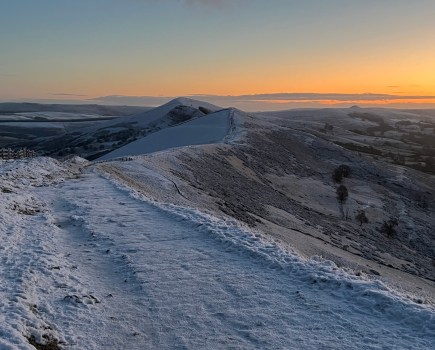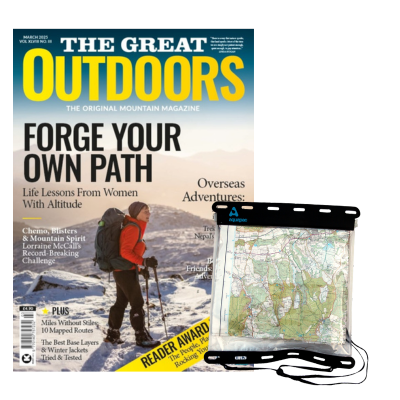Suffragettes played a leading role in the early history of mountaineering – but, argues Rachel Hewitt, the way they were phased out of the sport is a salutary lesson for today.
In 1911, Annie Smith Peck climbed to the 21,000-foot summit of Nevado Coropuna in the Peruvian Andes and unfurled a ‘Votes for Women’ banner. The following year, Fanny Bullock Workman led the first expedition to explore the Siachen Glacier in Baltistan, and was photographed holding aloft a newspaper with a ‘Votes for Women’ headline. The link between outdoor activities and women’s rights was so well established that, when a women’s Alpine Club was first founded in Britain in 1909, the Votes for Women newspaper joked that the club’s membership rosta would make a good recruiting ground for militant suffragettes.
I describe in my new book In Her Nature how, from around the mid-1800s, women turned en masse to outdoor activities, because they offered emancipation from ‘the shackles of conventionality’, as Victorian climber Lizzie Le Blond put it. Suffragists such as Mary E Crawford, president of Winnipeg’s Political Equality League, loved mountaineering because it helped women to ‘gain confidence with every step’ and to ‘gaze out upon a new world’: to hope for a brighter feminist future.
Today, there is a tendency to think of outdoor leisure as an ‘escape from the real world’ and ‘an outlet to escape politics’. But suffragette-mountaineers understood that access to the great outdoors was inseparable from politics – and, in particular, they saw how women were being driven out of the outdoors amidst a widespread anti-feminist backlash. The same is happening today, and we can learn from these women about how to resist it.
Suffragists were also passionate about outdoor sport because it had become a key battleground for women’s rights. Over the 19th Century, feminists had achieved legal wins that increased women’s rights in the public sphere and in their families. Many men experienced this as a raid on their own power: in Henry James’s 1886 novel The Bostonians, Basil Ransom was dismayed that “the whole generation is womanised; the masculine tone is passing out of the world”.

Annie Smith Peck in her mountaineering gear, 1911. Photo: public domain
Men couldn’t necessarily stall women’s legislative progress – so they pushed back in other areas, including women’s access to the outdoors. Through the 1880s and 1890s, many European and North American outdoor clubs and resorts had welcomed women. But by the end of the 19th Century, men were rewriting the rules of mountaineering clubs to exclude women. For example the Swiss Alpine Club, which had accepted female members from 1863, decided in 1907 to kick women out. As a consequence, female mountaineers had less visibility in male-dominated publications. And on top of this institutionalised exclusion, men increasingly used sexual intimidation to drive active women out of the outdoors. Numerous women wrote about how they’d ‘learned…to be afraid in broad daylight’, as suffragist Elizabeth Robins put it, because of ‘the darker moods of men’, which put them off walking and cycling on their own.
Today, many men express similar views to Basil Ransom, especially online, and it’s a commonplace belief that women’s rights have eroded men’s power.
The great outdoors has, once again, become a battleground. Men dominate the visible face of nature pursuits and contemporary sport. A ‘New Nature Writing’ anthology, which pledged to challenge male bias, still only included 2 women to 17 men. Social inequalities that deter women from outdoor pursuits – such as gendered gaps in leisure time and disposable income – have worsened since 2000, and particularly since the pandemic. Men’s public sexual harassment of active women has increased significantly over the last 7 years, and especially during and since lockdown. Once again, men are pushing back against feminism by driving women out of the outdoors.
How do we protect women? We could learn from the suffragist-mountaineers; from their successes, and also from their failures. Suffragists won the vote, but they temporarily lost the battle for women’s right to roam. Men were able to exclude women in the early 20th Century, in part because the organisation of sport and outdoor leisure was largely decentralised and unregulated, and swayed by individuals’ prejudices. So to protect women’s access to outdoor activities, we need to turn to centralised mechanisms. These include more robust legislation and policing for the prosecution of street harassment; legislation similar to Title IX in the US, which prohibits sex discrimination in college sport; and greater transparency and parity in how state funding is allocated to projects designed to boost the activity levels of men and women. (In 2022, the National Audit Office found that SportEngland doesn’t keep ‘sufficiently granular’ data about how much money it contributes to male vs female activities.)
We also need to keep in mind the link between outdoor leisure and politics, which the suffragist-mountaineers clearly identified. As they pointed out over 100 years ago, sport and outdoor leisure are not ‘escapes from the real world’. Women’s outdoor pursuits are particularly vulnerable to the misogyny of the ‘real world’, and only real-world reforms can protect women’s freedom outdoors.
Rachel Hewitt’s In Her Nature: How Women Break Boundaries in the Great Outdoors (Penguin Books) is out now.








